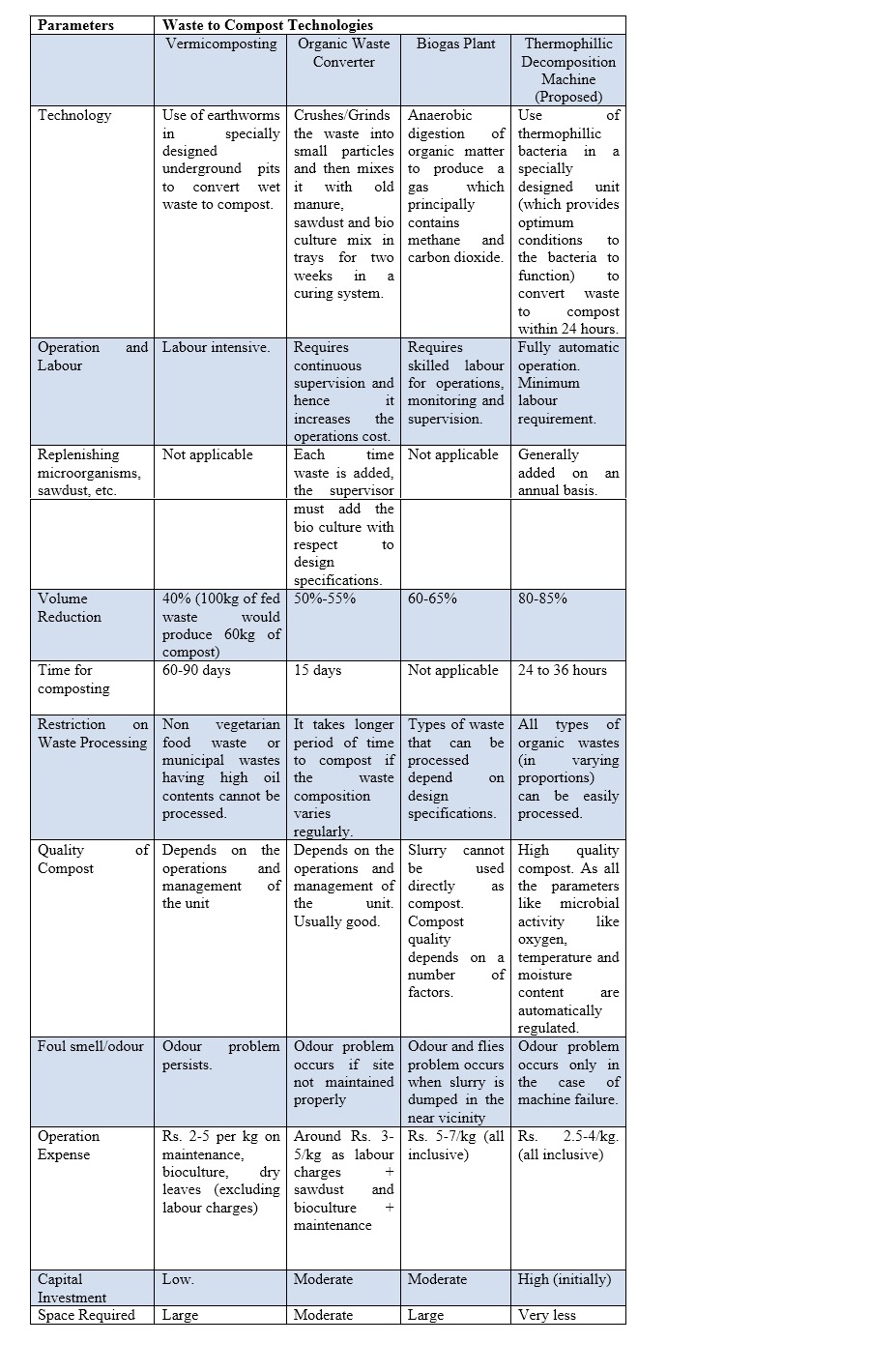- info@globalscientificinc.com
+91 8128998887
There are two major types of ways in which municipal biological waste is composted to organic manure with a certain amount of volume reduction.
1. Mesophillic decomposition :
The bacteria that is responsible for this kind of decomposition is called mesophillic bacteria. Mesophiles are micro-organisms such as some species of Bacteria , Fungi , and even some Archaea that are best active at median temperatures.
For instance, bacterial species involved in biodegradation (i.e., digestion and decomposition of organic matter), which are more active in temperatures ranging from approximately 70° - 90°F (approx. 15°–40°C), are termed mesophilic bacteria.
They take part in the web of micro-organic activity that form the humus layer in forests and other fertile soils, by decomposing both vegetable and animal matter.
This mechanism of decomposition is used in biogas plants, vermi composting plants, etc. where the bacteria which plays the most important role for the degradation of biological waste cannot survive in any temperature higher than the range specified above and becomes inactive in the temperatures below the ones specified above.
As this process occurs at normal temperature and pressure, it is slow and produces larger volumes of end products (compost) which need to be further treated in order to use them as organic manure.
Moreover, as the principal factor of “availability of appropriate temperature and conditions” for decomposition of waste, keeps on varying in the Indian climate, this decomposition process becomes slower and its operation and maintenance becomes difficult.
2. Thermophillic Decomposition:
The bacteria responsible for this kind of decomposition are called thermophillic bacteria.
A thermophile is an organism — a type of extremophile — that thrives at relatively high temperatures, between 41 and 122 °C (106 and 252 °F).
Hence, the name is given: Thermo = temperature & phillic = loving. The bacteria which love (higher) temperature and can function efficiently in them.
Many thermophiles are archaea. Thermophilic eubacteria are suggested to have been among the earliest bacteria. Thermophiles are found in various geothermally heated regions of the Earth, such as hot springs like those in Yellowstone National Park (see image) and deep sea hydrothermal vents, as well as decaying plant matter, such as peat bogs and compost.
Unlike other types of bacteria, thermophiles can survive at much hotter temperatures, whereas other bacteria would be damaged and sometimes killed if exposed to the same temperatures.
Thus, in this waste to compost machine works on the basis of Thermophillic Decomposition as it yeild faster and better results.
The culture that is added to the machine while commissioning contains thermophillic bacteria which are able to multiply in the ambient (higher) temperature conditions given to them within the machine. The shaft that keeps on rotating makes their uniform distribution better and ensures that the heat is also distributed in a uniform manner within the container.
Thus, here the wastes are not heated. It would make no difference if the waste are heated at 90 degree centigrade and the thermophillic bacteria are mixed with it. The bacteria requires its environment to be warmer in order to function and multiply.
Hence, here a system is created which heats up the closed system (waste container of the machine) and maintains the same range of temperature at an acceptable level (to the bacteria).
Therefore, ‘heating’ in this case should be considered as a process that works as a catalyst for decomposition of biological wastes and not as it is being provided to heat/burn the waste.

Copyright © 2013 - All Rights Reserved - Global Scientific Inc
Design by Team Soughted